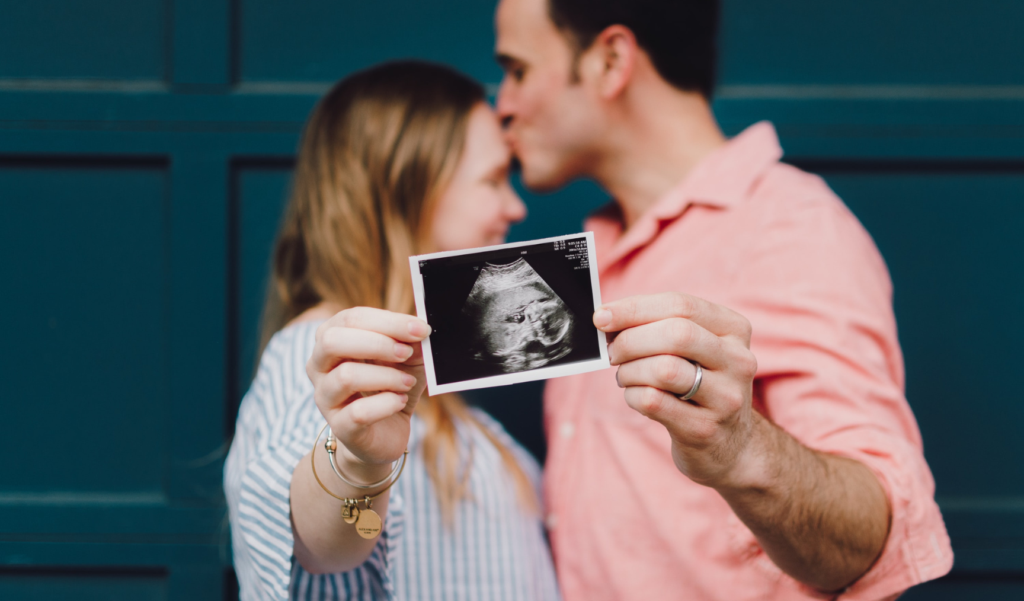Employer’s guide to parental leave in New Zealand
Published
Employer’s guide to parental leave in New Zealand
1 min read
Becoming a parent is a huge life change – there’s the sleepless nights, the different routines and the brand new list of responsibilities that gets longer every day. Particularly in those early days, having the time to adapt and spend time with the new arrival is so important. That’s why parental leave can make such a difference.
As an employer, you play an important role in ensuring your employee has the time they need through parental leave. New Zealand’s parental leave legislation provides specific frameworks and obligations that every employer needs to understand. It also has a lot of different entitlements and eligibility rules that mean that there’s no one-size-fits-all when it comes to time off.
Our comprehensive guide breaks down the legal requirements and administrative processes you need to manage parental leave effectively for your team. From understanding the different types of leave available to handling return-to-work arrangements, we’ll cover everything you need to know.
Download our guide by filling in the form on the right.
Types of parental leave
New Zealand legislation recognises several distinct categories of parental leave, each designed for different circumstances and caring arrangements. Understanding these categories helps you respond appropriately to employee requests and ensures you meet your legal obligations.
Primary carer leave
Primary carer leave is for the person who will be the main caregiver for the new child. It’s not dependent on gender like previous definitions of parental leave.
Partner’s leave
Partner’s leave provides specific entitlements for partners at the time of birth or adoption. This leave acknowledges the important support role partners play during the early days of a new arrival.
Extended leave
Extended leave allows the primary carer to take additional weeks of unpaid leave, past their primary carer leave allocation. This extended period recognises that some families need longer to establish care arrangements.
Special leave
Special leave applies only to pregnant employees and is unpaid. It covers pregnancy-related medical appointments and provides essential time off during pregnancy.
Negotiated carer leave
Negotiated carer leave is leave that employees can apply for if they don’t qualify for primary carer leave. They must be the future primary carer of a child and already qualify for parental leave payments (which act separately from parental leave).
Unlike the other types of leave, employers can decline a request for negotiated carer leave. However, they must only decline on very specific limited grounds related to business needs.

Parental leave eligibility
Parental leave eligibility depends on meeting specific employment criteria. To be eligible for parental leave, employees must:
- Work for a NZ employer,
- Have worked for them as an employee for an average of 10 hours a week for any 26 weeks of the 52 weeks before the child arrives,
- Pay income tax to Inland Revenue, and
- Be in an employment relationship which is subject to employment law.
How much parental leave an employee is entitled to depends on the type of leave they’re taking.
Primary carer entitlements
A primary carer can take up to 26 weeks of parental leave. If they’ve worked for their employer for at least 12 months, they can also take an additional 26 weeks of extended leave.
During parental leave, the primary carer may be eligible for government-funded parental leave payments for up to 26 weeks, subject to criteria administered by Inland Revenue. The payment rate is based on the person’s average weekly earnings, although it has a maximum weekly payment of $788.66 a week.
Job protection provisions ensure the primary carer can return to the same position at the end of their parental leave. The only exception is if the role becomes redundant or if it’s a ‘key position’ in your business, according to Employment New Zealand criteria.
Partner entitlements
Partners have more limited entitlements designed to provide support during the immediate period following birth or adoption. They can take up to 2 weeks of unpaid leave, which must be taken within 21 days of the birth or the child coming into their care through adoption. This leave can be taken as a continuous period or split into separate periods within the 21-day timeframe.
What is Paid Parental Leave (PPL)?
Paid Parental Leave (PPL) provides income support from the Government during parental leave periods. It’s administered by Inland Revenue, rather than employers. Understanding how this system works will help you support employees through the application process and manage your payroll obligations correctly.
Employees may be eligible for PPL if they meet specific criteria, including the duration of their current employment and whether they pay income tax in New Zealand. The payment is calculated based on average weekly earnings over a qualifying period, subject to maximum payment rates set by the government.
While Inland Revenue handles paid parental leave, employers may still have a part to play. You may need to provide employment information to support applications and handle the payment process if you choose to act as the paying agent for PPL.
When does parental leave start?
Choosing when parental leave begins for the carer of a child is really up to their discretion, but since it’s a limited timeframe, many employees choose to work as close to the expected due date so they have more leave to spend with their new child.

Understanding and managing special circumstances
Certain situations require different approaches to managing parental leave:
- Premature births may affect timing of the leave itself. Once the child is born, the leave starts straight away and the employee may be entitled to additional paid parental leave to compensate for the shortened pregnancy period.
- Stillbirths require sensitive handling, with the same leave entitlements applying as for live births.
- Adoption scenarios may involve different timing considerations, particularly if the adoption process involves extended periods of uncertainty. The leave entitlements begin when the child comes into the employee’s car.
- If your employee is a surrogate and will birth a baby that won’t stay in their care, they’re still entitled to primary carer’s leave (provided they meet standard eligibility criteria).
Keeping in Touch hours
Keeping in Touch (KIT) hours provide flexibility for employees to stay up to date during parental leave without compromising their leave status. These arrangements benefit both employees and employers when managed correctly.
Employees on parental leave can work up to 64 hours for their employer during their leave period without affecting their parental leave status. These hours can be used for training, important meetings, project consultations or other work activities that help maintain workplace connections.
KIT hours must be genuinely voluntary for the employee. You cannot require employees to work during parental leave and employees can refuse KIT hours without consequences.
Process for parental leave requests
Employees must provide you with at least 3 months written notice of their intention to take parental leave. In cases where 3 months notice isn’t possible (such as unexpected adoptions or premature births), employees should provide as much notice as is practical.
The notice should include key information such as the expected start and end dates of leave, the type of leave being requested and whether the employee intends to return to work after the leave period.
You must respond to parental leave requests within a reasonable timeframe, and you cannot unreasonably refuse requests that meet legal requirements. Your response should confirm the leave arrangements and outline any administrative requirements or next steps.

Return to work arrangements can significantly affect employee retention and satisfaction. Planning for these transitions during the initial discussions around parental leave helps ensure a smooth return.
Reintegration support helps employees transition back to work effectively. This might include updating them on workplace changes during their absence, providing refresher training if needed or gradually increasing responsibilities during an adjustment period.
Workplace changes during the employee’s absence also require careful consideration. If significant changes have occurred that affect the employee’s role, it’s helpful to consider how these changes may impact their return and whether additional support is necessary.
Common employer mistakes
Understanding frequent mistakes helps you avoid compliance issues and maintain positive employee relationships during parental leave periods. These errors often stem from misunderstanding legal requirements or inadequate administrative processes:
|
Common mistake
|
How to avoid it
|
|---|---|
|
Miscommunication about leave entitlements, which can create problems for both parties.
|
Provide clear, accurate information about leave options to prevent misunderstandings.
|
|
Miscalculating leave pay, often when employers don’t properly account for different types of leave.
|
Use reliable calculation methods or trusted payroll software to reduce the chance of human error.
|
|
Inadequate record-keeping of employee data, which creates risks for compliance reporting.
|
Make sure you’re keeping wage, time leave records for the legally required seven years. |
|
Poor return to work planning, which can result in employees feeling unsupported and potentially leading to resignations.
|
Invest time in return planning, to demonstrate commitment to employee retention and workplace culture.
|
How payroll and HR software supports parental leave management
Employment Hero’s payroll and HR software is a game-changer when it comes to managing leave. Packed into our Employment Operating System, our leave management features allow employers to automate leave calculations in payroll, share policies for digital acknowledgement and keep comprehensive records.
It can also reduce a lot of admin with extensive employee self-service features. Through the Employment Hero Work app, employees can submit leave requests, track their entitlements and access the information they need.
Download the parental leave guide
Navigating parental leave can be a challenge. You’re supporting your employee in their exciting new chapter while also ensuring that you’re meeting your legal obligations as an employer. Ensuring you have clear processes in place not only supports compliance but shows your team that you support them during life’s biggest moments.
To find out how to manage parental leave effectively, download our comprehensive guide by filling in the form on the right.
The information in this article is current as at 9 October 2025, and has been prepared by Employment Hero Pty Ltd (ABN 11 160 047 709) and its related bodies corporate (Employment Hero). The views expressed in this article are general information only, are provided in good faith to assist employers and their employees, and should not be relied on as professional advice. Some information is based on data supplied by third parties. While such data is believed to be accurate, it has not been independently verified and no warranties are given that it is complete, accurate, up to date or fit for the purpose for which it is required. Employment Hero does not accept responsibility for any inaccuracy in such data and is not liable for any loss or damages arising directly or indirectly as a result of reliance on, use of or inability to use any information provided in this article. You should undertake your own research and seek professional advice before making any decisions or relying on the information in this article.
























